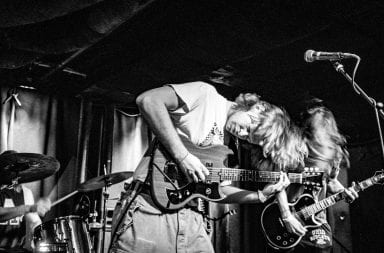There is more and more pressure from the medical community to include the arts and humanities when considering the medical sciences.
In an attempt to explore this, the Wexner Center for the Arts will host “Medical humanities: From campus to communities,” a series of lectures, panels and symposia about the intersection of medicine, the arts and social sciences on Friday and Saturday.
The event will focus on five sessions about the critical spaces in which medicine and health intersect within society–– the screen, the bedside, the classroom and the community.
“Medicine has largely taken its object of study to be the physical body,” said Brooke Holmes, Princeton University’s director of the interdisciplinary doctoral program in the humanities. “Given that the body has been isolated out of the person … there’s always this sense that one needs to acknowledge that patients are not just bodies in medicine.”
These discussions will focus on how and why doctors need to bring the humanities in conversation with patients’ lives — to treat people like people and bring their narratives into day-to-day healthcare practices.
“What that does is ultimately help patients feel like actual people because so many patients these days are just feeling like commodities,” said Dana Renga, an associate professor of Italian who serves as chair of the Department of French and Italian. “In a practical sense, it also helps doctors catch different illnesses they would have seen if they’re really listening to patients and listening to their narratives.”
However, Holmes said it’s difficult to change the long history of medical methodologies.
“There’s really always a question, which is the question in a lot of universities right now: well, what’s necessary and what’s a luxury?” Holmes said. “Humanistic knowledge is seen as a luxury because it’s seen as not integral to curing bodies.”
These ideological changes, in how medicine should be considered, also are constrained by everything doctors need to accomplish, beginning from the start of their careers in medical school.
“A lot of medical centers have so much going on and so many hours they have to log and so much training,” Renga said. “The reality is that time is impossible.”
These obstacles, though, aren’t stopping universities and medical communities from figuring out how to integrate medicine with other fields earlier on.
At Ohio State, this means students can minor in medical humanities or gain a Masters of Arts in medical humanities and social sciences. Renga said learning medicine from a humanistic perspective affects how future doctors understand their patients.
“That perceived divide between the humanities and sciences … is just a fiction,” she said. “The humanities and medical sciences have so much in common, and we just have to break down those walls and show there’s all of this overlap.”
The event will take place 8:30 a.m. Friday and 9:00 a.m. Saturday at the Wexner Center for the Arts. Admission is free. Register at https://u.osu.edu/medhumcon2018/registration/.


